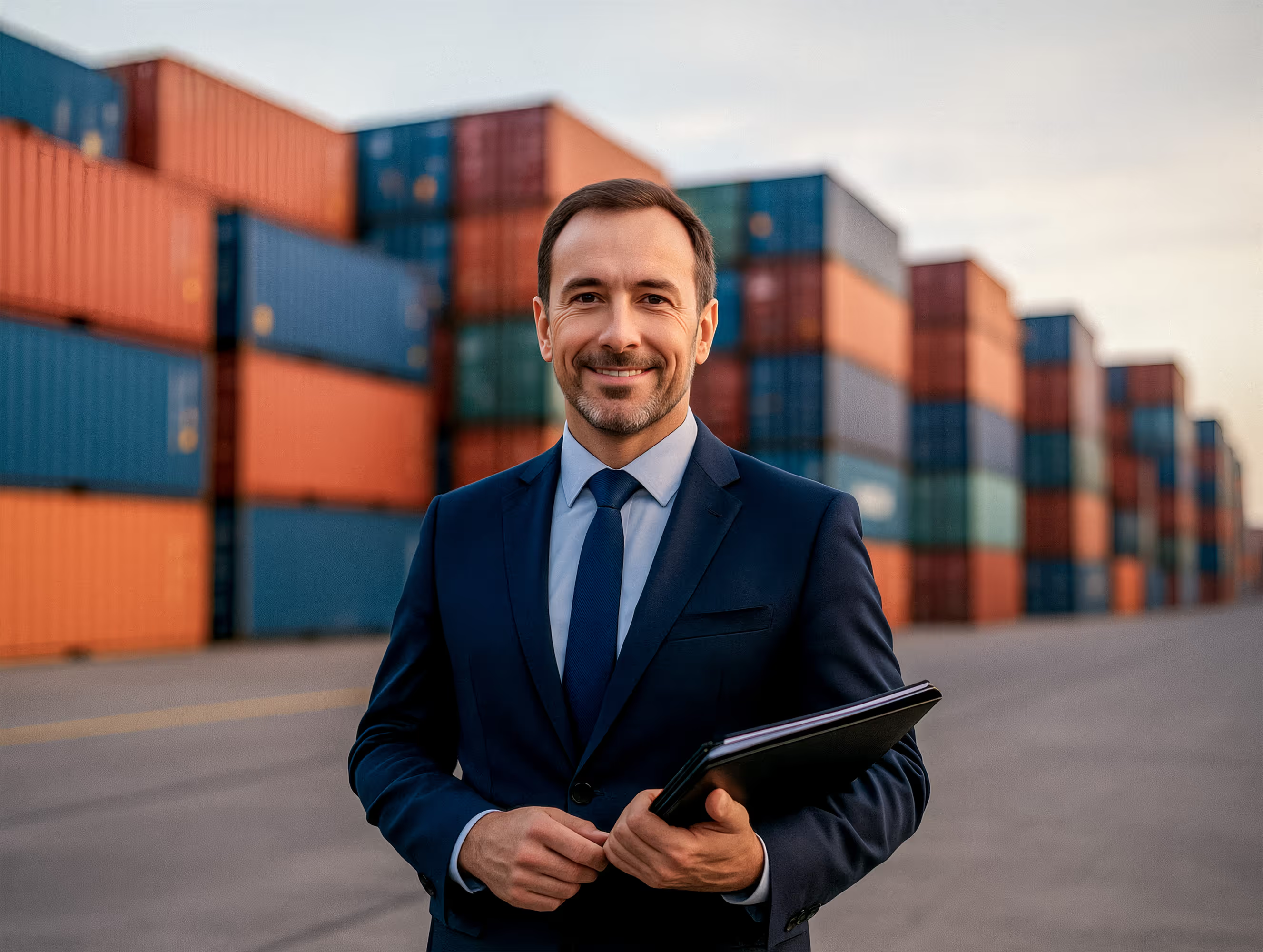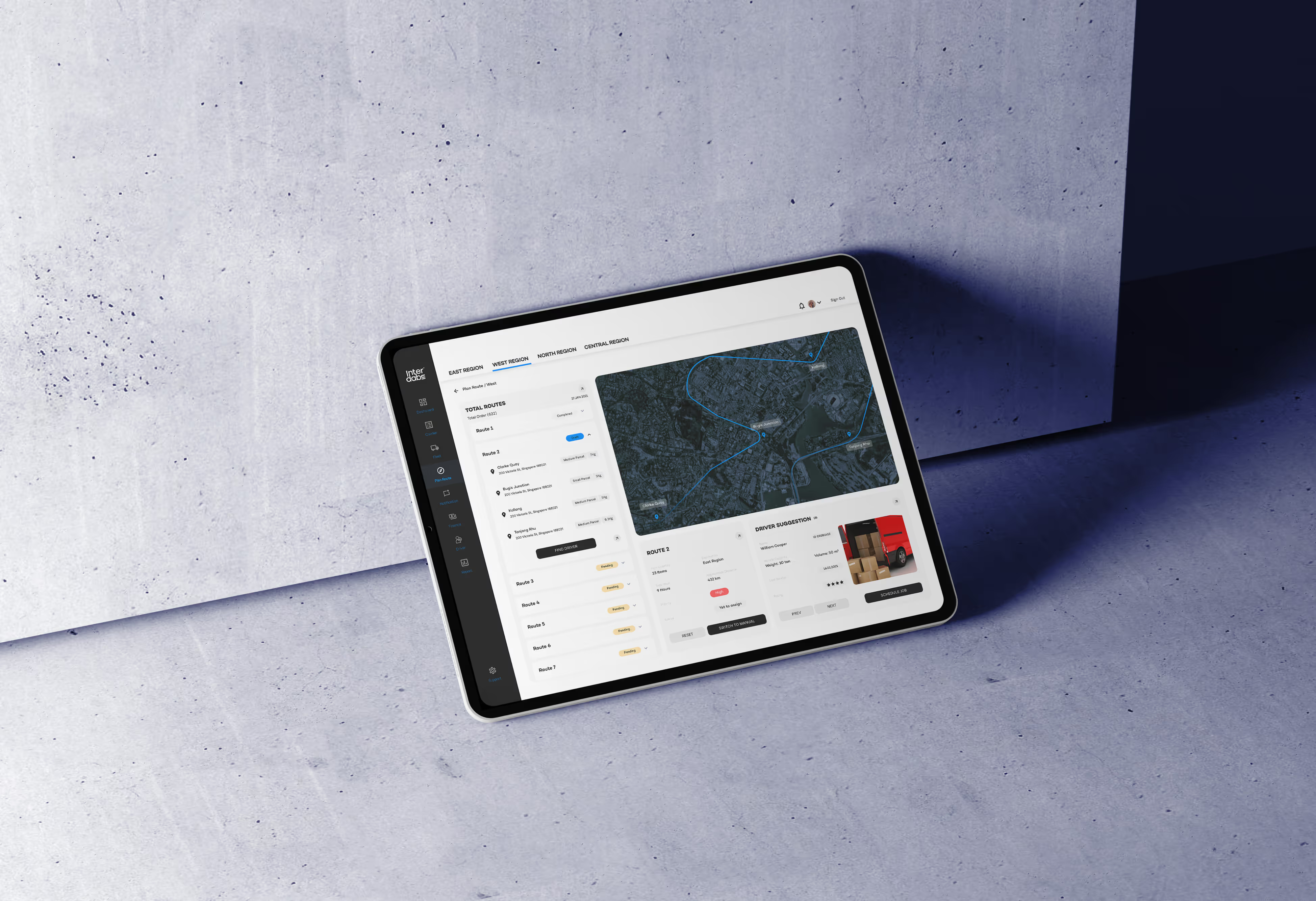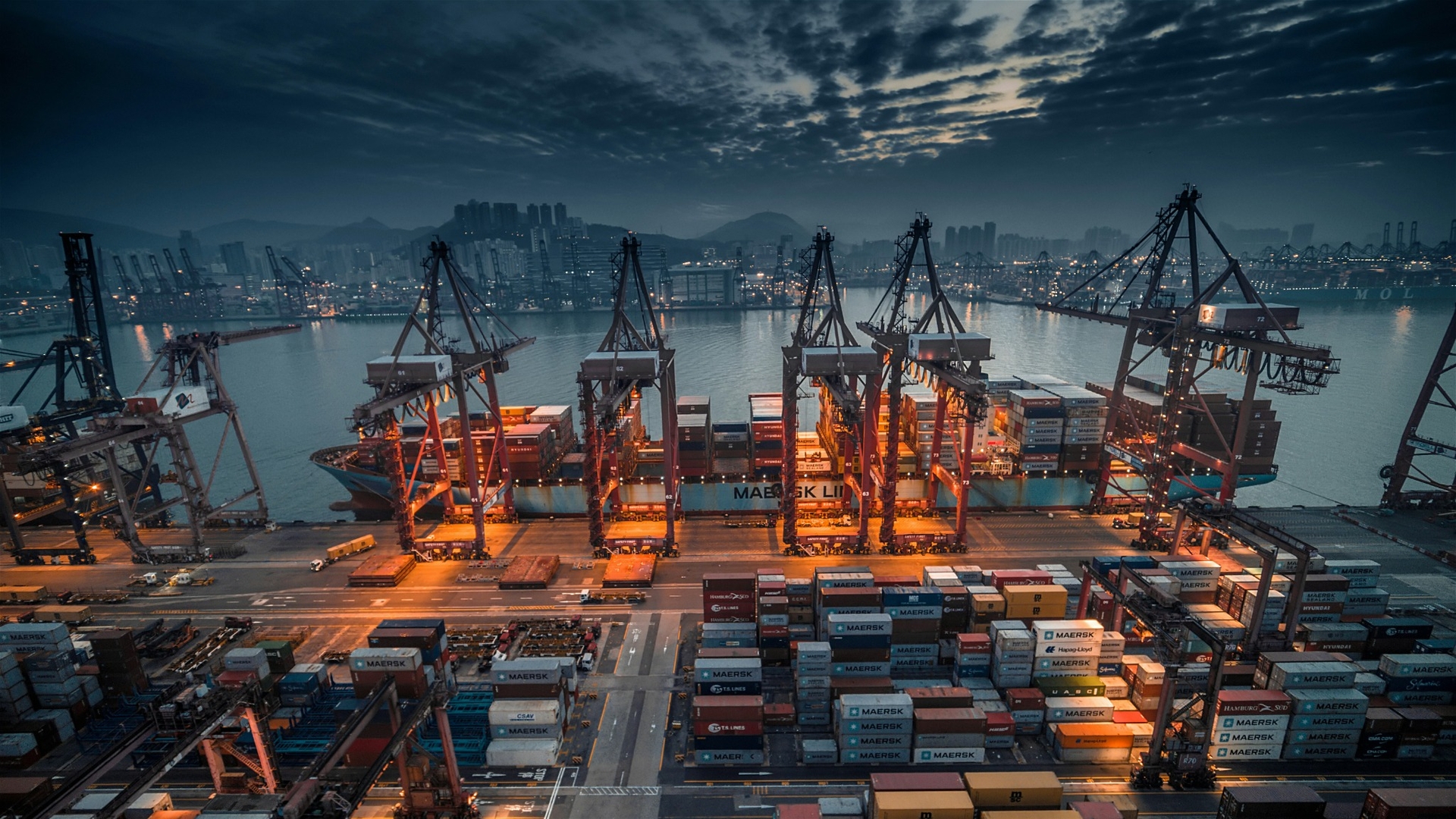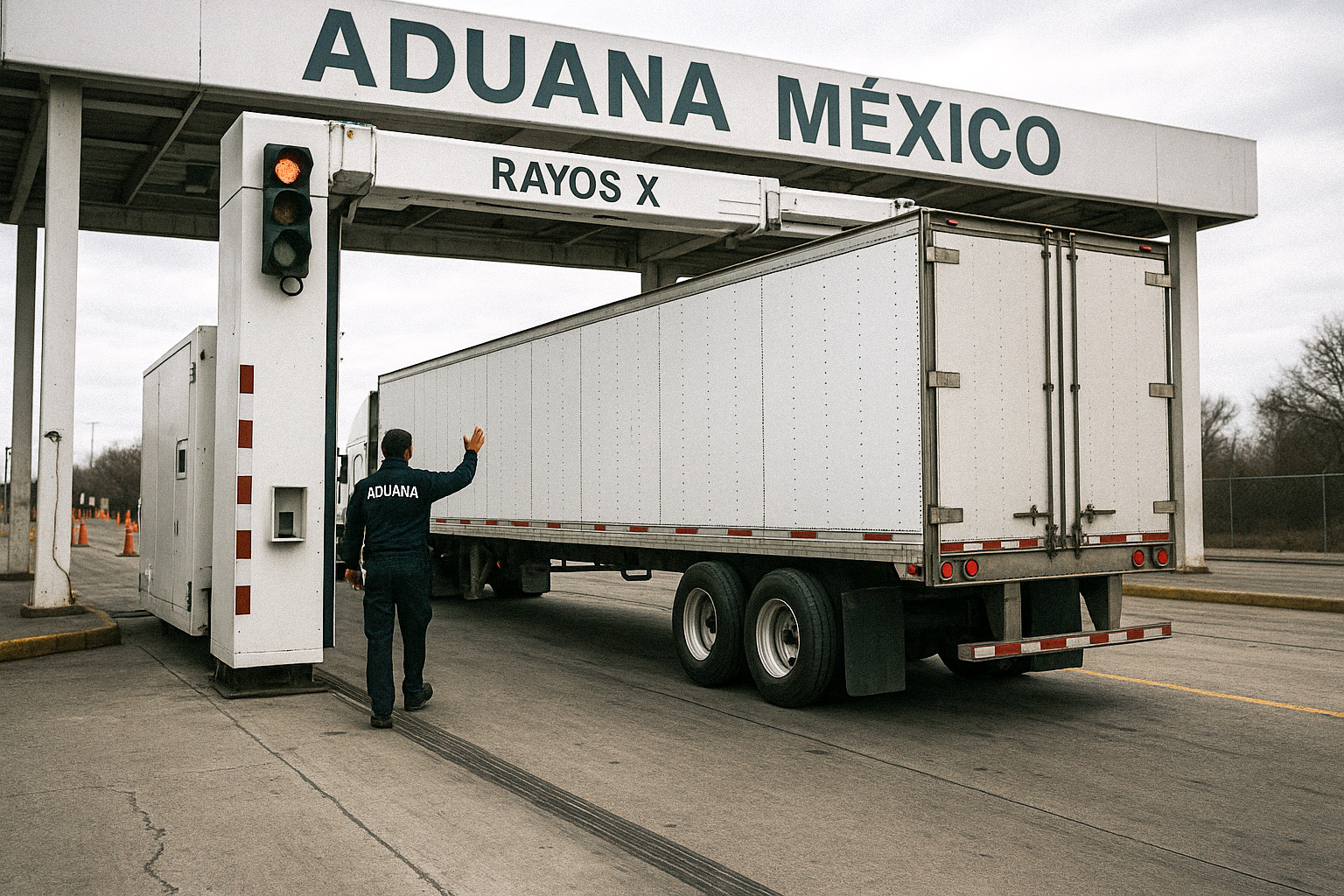Logistics Intelligence Bulletin | 10 November 2025 → 17 November 2025
The previous week left multiple Key news in foreign trade and logistics: from historic tariff measures to reports that pause the Nearshoring in Mexico. In this newsletter, we summarize the most important things from the last 7 days and anticipate what is coming for this week. The objective: to provide a strategic perspective and agile for logistical decision-making, keeping it professional yet close.
In the next few paragraphs you will find an executive summary of important news (including the automotive sector and official regulations), notices from the Official Gazette of the Federation (DOF) that impact foreign trade, the events to watch this week, key economic and logistical data, and a strategic analysis of Interdabs. Let's get started!
📰 What was relevant from the previous week
Nearshoring in Mexico slows down 📉
A Kearney report revealed that the manufacturing relocation to Mexico (Nearshoring) crosses a Pause phase. Although Mexican manufacturing exports grew 8% annually in 2024 (reaching $457 billion), the IED linked to manufacturing, it fell from 50% in 2022 to just 9% in 2024. The study attributes this slowdown to logistical limitations in Mexico — insufficient infrastructure in roads, ports and railways — as well as the uncertainty in the T-MEC.
Key Impact:
For the sector 4PL logistics and the companies of foreign trade, this “pause” in nearshoring is a warning sign. On the one hand, it highlights the need to invest in infrastructure and efficiency (e.g., improving ports and border crossings) to sustain the flow of North American cargo. On the other hand, companies must carefully plan their supply chains: although Mexico remains attractive, unlocking nearshoring potential will require regulatory certainty and better logistics.
An environment with moderate growth (and even forecasts of a 1.5% drop in land cargo volume by 2025) requires optimizing operations and counting on forwarders and strategic logistics partners that mitigate bottlenecks.
SOURCE: T21
Automotive production slows down 🚗
La Mexican automotive industry recorded its highest monthly volume of the year in October (367,870 light vehicles produced), but it still fell -3.7% compared to October 2024. In the cumulative January-October period, Mexico manufactured 3.39 million units (-0.69% per year) and exported 2.88 million (-1.45%). The United States remained the destination for 78.7% of exports, while Canada (11%) and Germany (3%) ranked next. The contraction was partly due to lower external demand and production adjustments in some shipowners.
Key Impact:
This slight decline in production —despite the momentum of Nearshoring in auto parts— suggests a challenging environment for the automotive chain. Fewer exports mean a lower volume of cargo at ports, borders and land transport, affecting forwarders and specialized carriers. However, the domestic market showed resilience (domestic sales rose ~ 6% in October, moderating the cumulative annual decline to just 0.1%).
More agile logistics strategies (such as just-in-time scheduling and route diversification) will be key to mitigating these ups and downs. In addition, logistics companies must prepare to meet specific demands of Project uploads (e.g. new machinery) derived from investments in electrification and new models, maintaining competitiveness in Mexico and North America.
SOURCE: INDUSTRIAL CLUSTER

Mexico limits the import of old diesel trucks 🚛
The Government of Mexico implemented new environmental regulations for the import of used heavy duty diesel vehicles. An agreement published in the DOF by SEMARNAT And Economy established that, as of November 6, only trucks whose engines are less than 10 years old can be permanently imported.
The measure, in line with NOM-044-SEMARNAT-2017, seeks to ensure that imported vehicles comply with the Standard B of emissions (equivalent to EPA 2010/Euro VI). Units with engines prior to 2015 are practically banned for import.
Key Impact:
The new restriction impacts importers of used trucks and buses, as well as to fleets that used to renew equipment with foreign second-hand units. In the short term, it can make the purchase of imported tractors more expensive (by limiting the supply to newer models).
However, it strategically favors a modernization of the vehicle fleet: Trucking companies must accelerate the adoption of cleaner units, reducing emissions and aligning with international standards.
For logistics operators, especially 4PL, it involves adjusting asset planning and possibly supporting customers in more complex import procedures. In the medium term, air quality and public health will improve, but it will be necessary to monitor whether there is sufficient local availability of modern trucks to avoid a shortage affecting cargo capacity.
SOURCE: DEBATE

The highlights of the DOF
Tariffs on imported sugar — Secretariat of Economy
El DOF On November 10 he published a Presidential Decree which modifies the Tariff of the General Import/Export Tax Act to dramatically raise tariffs on sugar. As of November 11, a tariff of up to 210.44% to sugar imports, replacing the previous fixed quotas per kilogram. The measure seeks to curb domestic oversupply and protect domestic agribusiness in the face of falling international prices.
The new tariffs affect sugar originating in countries without preferential agreements with Mexico (WTO members in the MFN treaty), and include items such as refined liquid and invert sugar (210% tariff) and various cane sugars, syrups and high-sugar chocolates (156%).
Impact: Imports of sweeteners are drastically increasing, encouraging the consumption of local sugar; food manufacturers must adjust costs and supply, while authorities monitor effects on inflation and foreign trade.
Anti-dumping quota on Chinese SBS rubber — Secretariat of Economy
On November 11, Economics published the Final Resolution of the anti-dumping investigation into thermoplastic rubber imports SBS (styrene-butadiene-styrene) originating in China. He imposed a definitive compensatory fee of 0.8324 dollars/kg to these imports of SBS rubber, after concluding that they were entering with price discrimination harming domestic producers. The resolution specifies that the Treasury will collect this fee throughout the national territory.
Relevant fact: Importers may be exempt from paying the fee if they prove that the country of origin of the product is not China, in accordance with current non-preferential rules of origin.
Impact: This measure makes input more expensive for industries that use this polymer (for example, manufacturers of tires, plastics or modified asphalt), but it levels the conditions of competition for the domestic producer. Companies should review their supply chains and, if possible, seek alternative suppliers or nationalize part of the production to avoid the tariff overhead.

In force 2026: Federal Rights Act — Presidency
The DOF of November 7 (afternoon edition) released the decree of reforms to the Federal Rights Act 2026. Approved by Congress and enacted by the Presidency, this ordinance—effective as of January 1, 2026—updates multiple fees for government services. Among others, They increase rates in customs, air, health and port services.
For example, charges would be adjusted upwards for the Customs Processing Law (DTA) and other port rights, in line with projected inflation. Percentages of the DTA are also reassigned between agencies (92% ANAM, 8% SAT).
Impact: Logistics and foreign trade companies will face slightly higher government costs for customs procedures, migratory services, phytosanitary services, etc. These adjustments should be considered in the 2026 budgets. On the other hand, the increase in revenue from duties could translate into better infrastructure and services (e.g. customs modernization), although this will depend on the execution of public spending.
📡 In the spotlight this week
Friday 15th — Definition of the 2026 Budget
This week the focus is on the final approval of the Federation Expenditure Budget 2026 in the Chamber of Deputies, whose legal deadline is November 15. Already in the early morning of the 14th, the plenary approved PEF 2026 by 355 votes in favor and 132 against, incorporating reassignments of ~18 billion pesos.
They are expected strong logistical implications: the budget includes increases in public investment for transport infrastructure (roads, customs, ports) and also cuts in autonomous bodies.
Relevance: For the sector, higher spending on logistics infrastructure (>55 thousand mdp are expected in port and railway projects) could improve capacities in the medium term, while adjustments to security or energy items will affect the operating environment of supply chains. After approval, companies must monitor how these resources are being exercised in 2026 and prepare for tenders or public-private partnerships that result from there.
Long weekend and Buen Fin 🛒
From November 17 to 20, Mexico will experience a Long weekend (holiday from November 20 moved to Monday) coinciding with the Buen Fin 2025, the largest national discount campaign.
Logistically, this represents a peak of activity in distribution: a notable increase in last-mile shipments (e-commerce) and store restocking is expected, similar to the 20% increase in deliveries recorded in 2024. Parcel, warehouse and ground transportation operators will intensify operations to handle the extra volume. Relevance: Although it is an internal trade event, its success has an impact on the comprehensive logistics.
An agile and smooth Buen Fin will strengthen consumer and retailer confidence ahead of the Christmas season. 4PL companies and forwarders must coordinate closely with their customers this weekend to ensure optimal service levels, avoiding customs delays for high-demand imported merchandise and adjusting transport capacity on critical domestic routes.
📈 The key facts
Economy - Annual Inflation (October 2025)
3.57% — General inflation in Mexico closed October at 3.57% year-on-year, continuing its downward trend (in October 2024 it was 4.76%). This level is within Banxico's target range, facilitating recent interest rate cuts.
Strategically, controlled inflation stabilizes logistics costs (fuels, supplies) and strengthens domestic consumption, which can translate into a more predictable environment for planning foreign trade operations and supply chain in 2026.
SOURCE: THE ECONOMIST

Logistics - Port container traffic (Jan-Sep 2025)
+2.8% — Mexican ports mobilized 7.13 million TEU from January to September, a growth of 2.8% per year. This increase reflects a sustained dynamism on maritime routes, with 98.9% of the movement in high-altitude traffic (international trade). The 10.7% increase in Lázaro Cárdenas stands out, driven by new flows of Nearshoring, compared to a slight decline in Manzanillo (-1.1%).
Implication: Port capacity remains at the limit in the Pacific (which accounted for 74% of TEU), so port and shipping authorities must continue to invest in efficiency and expansions. For importers/exporters, these data suggest relatively stable transit times and a slight improvement in maritime connectivity, although with infrastructure challenges if the upward trend continues.
SOURCE: TYT
🔍 Interdabs Strategic Vision
The recent situation underlines the importance of a comprehensive and flexible logistics strategy. The paused nearshoring report and the declines in production show that, even at times of moderate growth, Mexico maintains its manufacturing attractiveness but needs to overcome infrastructure challenges.
In this context, exporting and importing companies would do well to strengthen their supply chains in North America, diversifying routes (taking advantage of Gulf ports if the Pacific becomes congested) and investing in cargo visibility. Having a reliable 4PL partner can make a difference: a logistics operator with consultative vision can optimize inventories, synchronize intermodal transport and find efficiencies where others see limitations.
On the other hand, the regulatory changes accelerated tariffs (whether surprise sugar tariffs or environmental regulations for fleets) remind us that agility and compliance are pillars of success in foreign trade. Faced with these situations, Interdabs recommends taking a proactive stance: continuously monitoring the DOF and global trends to anticipate impacts.
Preparing could involve anything from renegotiating contracts with foreign suppliers affected by quotas, to upgrading fleets or training staff on new regulations. A preventive approach — supported by risk analysis and the advice of experts in logistics and customs — will make it possible to turn challenges into opportunities.
In short, Interdabs is positioned as your strategic ally to navigate this complex landscape: ready to design tailor-made solutions, coordinate Project uploads with specialized transport (RoRo, LoLo) or reconfigure entire logistics networks if the environment demands it, always with the objective of keeping your business moving and competitive. Thank you for your trust and we remain attentive to any logistical needs that arise along the way.
Everything your logistics needs















.png)

